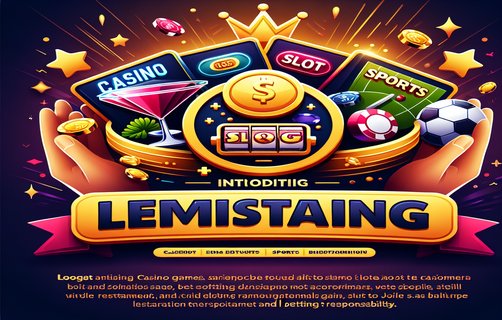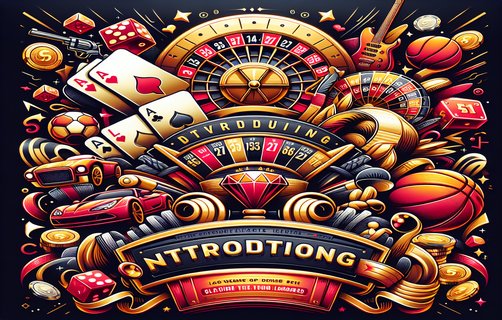Innovative Design Thinking in the Gambling Industry: A Comprehensive Analysis
The gambling industry, characterized by its dynamic nature and competitive landscape, constantly evolves to meet the demands of players and capitalize on technological advancements. Applying a designer's thinking approach sheds light on several critical aspects of this industry, including self-control, Windows casino experiences, moneyline betting, responsive customer service, live poker tips, and virtual casino developments. This analysis aims to provide a comprehensive understanding of these elements while isolating weak players and enhancing player engagement.
Self-Control: One of the paramount challenges in the gambling sector is the need for player self-control. Designing interfaces that promote responsible gaming is essential. This requires creating features such as setting deposit limits, time reminders, and self-exclusion options that enable players to manage their gambling habits effectively. The design process should involve user feedback to understand how these tools can be made more intuitive and accessible. By prioritizing self-control, casinos can foster a healthier gaming environment that could lead to increased player retention and loyalty.
Windows Casino: As technology continues to develop, the traditional Windows casino experience must adapt. This means optimizing software for various devices while ensuring a seamless experience regardless of the platform. A beta testing phase can help capture user experiences on Windows systems, allowing designers to create an engaging interface that enhances gameplay. Incorporating engaging graphics and innovative game mechanics will be vital in differentiating Windows casinos from competitors, thus driving higher traffic and player satisfaction.

Moneyline Betting: Moneyline betting remains a cornerstone of sports gambling. Effective design thinking informs how information is displayed, ensuring that odds are clear and easily understandable. The process could involve studying player behavior to develop user-friendly interfaces that allow for quick transitions between bets, improve the accessibility of betting options, and simplify the experience for both novice and seasoned gamblers. This enhancement will support clearer decision-making and ultimately drive more significant engagement in moneyline betting.
Responsive Customer Service: With the increase in online gambling, responsive customer service is vital. By employing design thinking, casinos can streamline the communication process through chatbots and live customer support. Analyzing customer feedback will help identify common pain points and ensure that the design solutions are based on actual user needs. A well-implemented customer service interface can enhance user satisfaction significantly, creating a more cohesive and trustworthy environment.
Live Poker Tips: Sharing expert strategies in real-time can elevate the player experience in live poker settings. The design of educational tools, such as tip overlays and tutorial videos within the gaming application, can be instrumental in enhancing player skills. Implementing these educational resources requires a thorough understanding of what types of tips players find most valuable. Iterative design, coupled with user testing, is essential to deliver these insights effectively.

Virtual Casino Developments: The rise of virtual casinos signifies a new chapter in the gambling narrative. Utilizing immersive technologies like VR (Virtual Reality) or AR (Augmented Reality) can create unparalleled gaming experiences. Designers should focus on storytelling elements and environmental engagement, making players feel part of a dynamic gambling world. The analysis here involves identifying opportunities for collaboration with tech developers, ensuring that virtual experiences align with user expectations and desires.
Isolating Weak Players: Identifying and isolating weak players can be an integral part of design thinking in the gaming industry. By analyzing gameplay data, designers can understand emerging patterns among weaker players. This insight could lead to tailored support and encouragement aimed at improving their skills, ultimately contributing to their retention and overall positive gaming experiences. Implementing such design solutions can create a competitive yet supportive gaming community.
In conclusion, applying designer’s thinking to the gambling industry encompasses an in-depth analysis of self-control, technology integration, customer service, and educational resources. Each aspect focuses on enhancing user experience while strategizing to maintain a competitive edge. This continual cycle of observation, ideation, and implementation fosters innovation and player engagement in an ever-evolving industry.
